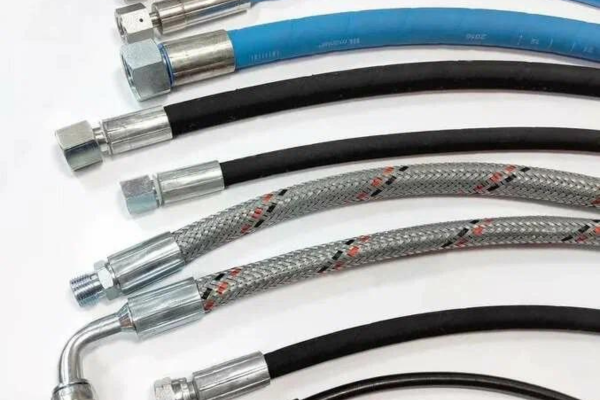Hydraulic hoses are critical components in various industrial and mechanical systems, such as in construction machinery, manufacturing equipment, and automotive applications. Parker Hannifin is one of the leading manufacturers of hydraulic hoses, known for their durability and performance. However, even the highest quality hoses must be handled with care. This article provides a comprehensive guide to the safety protocols for installing and using Parker hydraulic hoses to ensure operational safety and efficiency.
Understanding Hydraulic Hoses
Hydraulic hoses are flexible tubes used to convey hydraulic fluid between components within hydraulic systems. The fluid under pressure performs work, such as moving heavy loads or operating complex machinery. Due to the high pressures involved, it’s crucial that hydraulic hoses are installed correctly and maintained properly to prevent failures that could lead to injuries or equipment damage.
Pre-Installation Safety Checks
Before installing a Parker hydraulic hose, there are several important safety checks that must be conducted:
- Hose Selection
Choosing the right hose for the specific application is crucial. Ensure the hose’s specifications, such as size, pressure rating, and material compatibility, match the requirements of the hydraulic system. Using the wrong type of hose can lead to premature failure.
- Inspect the Hose
Before installation, inspect the hose for any signs of damage, such as cuts, abrasions, or kinks. If the hose shows any of these signs, it should not be used, as it can compromise the system’s integrity.
- Check Fittings and Connections
Ensure that all fittings and connection points are compatible with the hose and are in good condition. Incompatible or damaged fittings can cause leaks or blowouts under pressure.
Installation Protocols
Proper installation is key to the safe and efficient operation of hydraulic hoses. Follow these guidelines to install Parker hydraulic hoses safely:
- Follow Manufacturer Guidelines
Always refer to Parker’s installation guidelines. These instructions include specific details on routing paths, bending radii, and securing methods that prevent undue stress on the hose.
- Avoid Twisting the Hose
When connecting the hose to the system, make sure it is not twisted. A twisted hose can weaken structural integrity and reduce its lifespan.
- Secure Properly
Use proper clamps and supports to secure the hose along its length. This prevents excessive movement that could lead to wear and tear or disconnection under pressure.
- Protect From Extreme Conditions
If the hose is exposed to harsh environmental conditions such as high temperatures, corrosive chemicals, or physical abrasions, make sure it is properly protected with the appropriate covers or guards.
Using Hydraulic Hoses Safely
After installation, using the hydraulic hoses safely is crucial to maintaining system integrity and safety. Here are some tips:
- Regular Inspection
Regularly inspect hoses for signs of wear, leaks, or damage. Early detection of potential issues can prevent accidents and system failures.
- Monitor Pressure Levels
Always monitor hydraulic pressures during operation. Exceeding the hose’s rated pressure can lead to failures. Use a pressure gauge to ensure levels are within safe limits.
- Handle with Care
During operation, ensure that the hose is not subjected to sharp bends or kinks, which can weaken the hose and lead to ruptures.
- Shut Down Procedures
When not in use, follow proper shutdown procedures to relieve pressure within the hose. This can extend the hose’s life and reduce the likelihood of accidental discharge. For More Information
Maintenance and Replacement
Proper maintenance is essential for the longevity and safety of hydraulic hoses:
- Routine Maintenance
Include hydraulic hoses in your regular maintenance schedule. Check for and replace worn or damaged hoses or fittings as needed.
- Follow Replacement Guidelines
Parker provides guidelines on how frequently hoses should be replaced, depending on their use and environmental conditions. Adhere to these guidelines to ensure safety.
- Keep Records
Maintain records of installation and maintenance activities. This helps track the hose’s lifespan and plan for timely replacements.
Conclusion
Installing and using Parker hydraulic hoses safely requires attention to detail and adherence to specific safety protocols. From selection and installation to use and maintenance, every step involves precautions that ensure the safety of both the hydraulic system and its operators. By following these guidelines, you can maximize the performance and lifespan of your hydraulic hoses while maintaining a safe working environment. Thank visiting integratedblogs.com





